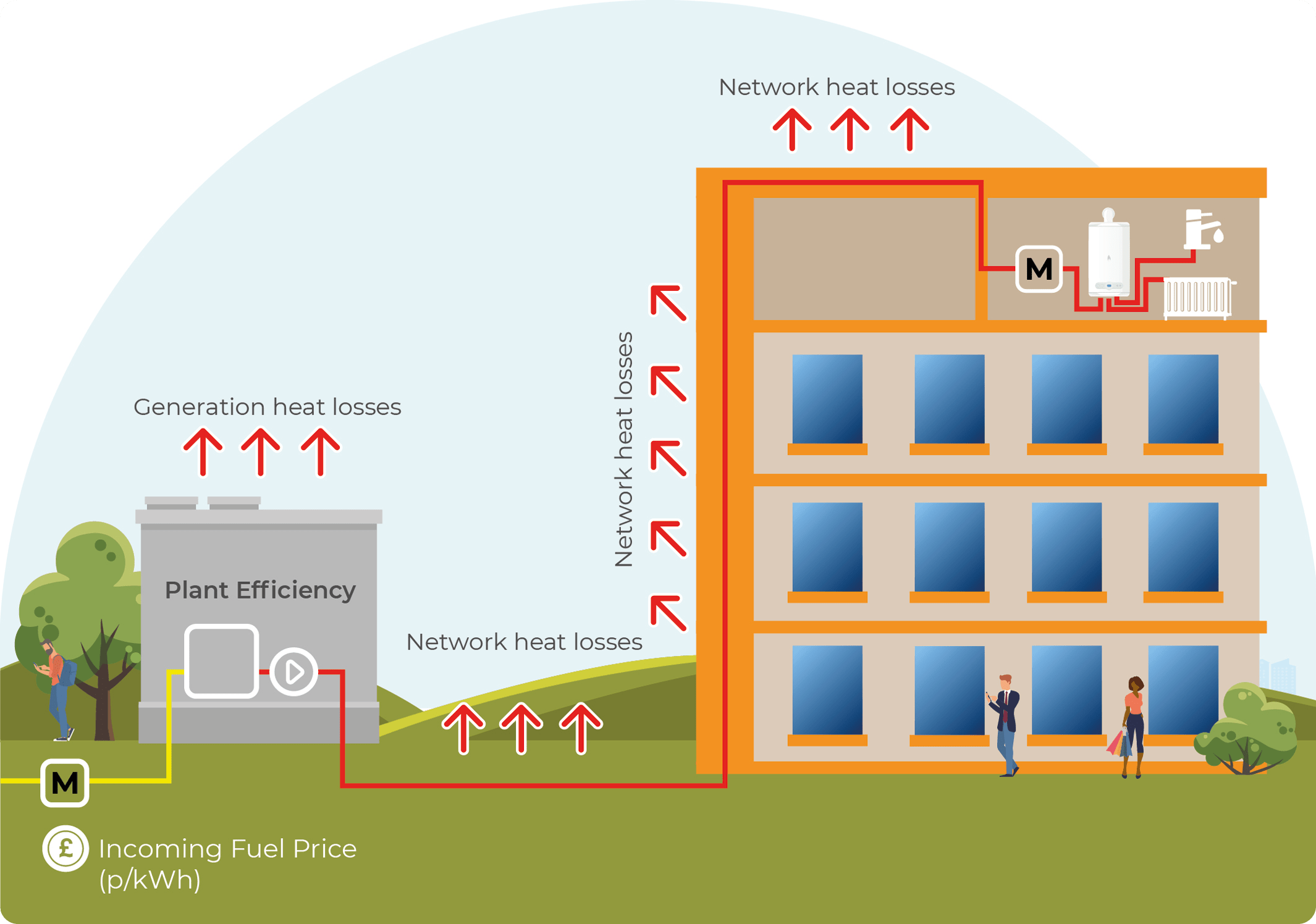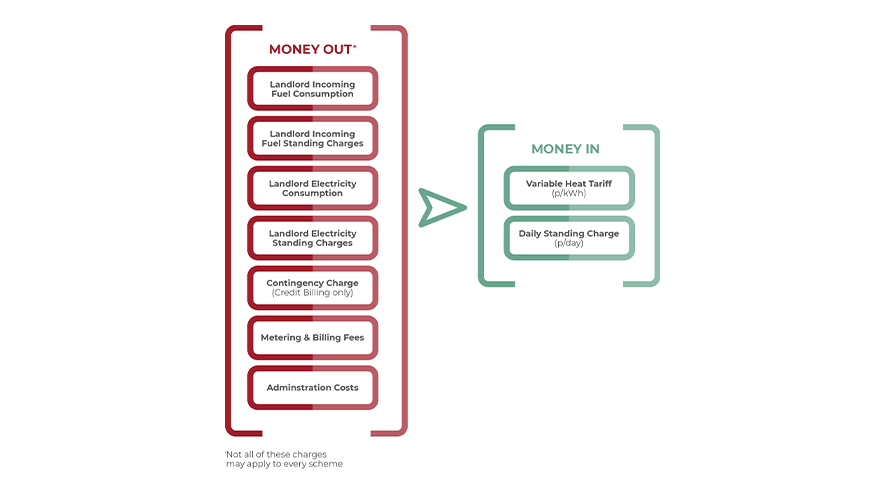
Five ways to help your heat network residents save energy and money
17th January 2023Written by: Eelinn Vanquaethem, Marketing & Content Manager
It’s Big Energy Saving Week, and while we have a few resources available to help our residents reduce their energy consumption, there is a lot that you, as their heat supplier, can provide them with too.
Big Energy Saving Week runs from the 16th until 22rd January 2023, and was created in partnership with Citizens Advice, the Energy Saving Trust and the Department of Business, Energy and Industrial Strategy to help people save energy and money.
The tips and advice provided during this week often relate to financial support available, ways to cut energy usage, and why people might want to consider changing energy suppliers. For heat network residents the latter is not an option, so it’s even more important that we as heat network managers and heat suppliers support our residents as best as we can.
To do so, we have compiled a list of how you can help your residents save energy.
Five ways to help your residents this Big Energy Saving Week:
1. Improve the efficiency of your heat network
2. Stay up to date on regulations and available funding
3. Ensure tariffs are accurate
4. Be available to your residents
5. Have useful and informational resources available
1. Improve the efficiency of your heat network
Heat networks are in most cases a lower carbon way to heat buildings. Instead of homes being heated by individual gas boilers, there is one central energy source providing heating and hot water to each property via a network of insulated pipes. If maintained properly, heat networks are often much more efficient and environmentally friendly than traditional individual gas boilers.
However, if a heat network is not regularly looked after or is looked after by an engineer who may not be familiar with heat networks, there is an increased risk of heat losses, resulting in the network being much less efficient than when it was commissioned.
 Figure 1: Heat network losses occur throughout the network, but can be minimised by proactive maintenance.
Figure 1: Heat network losses occur throughout the network, but can be minimised by proactive maintenance.
While servicing heat interface units (HIUs) within individual dwellings, our engineers often find that they have not been commissioned under CIBSE Code of Practice 2020 (CP1) technical standards. This has resulted in HIUs not working as they should, an influx in residents’ complaints, and heat being lost that residents still pay for. Reducing the temperature of water feeding into the HIUs at 45 to 60°C can already make a big difference to the efficiency of your heat network.
Many issues, like HIUs not being set to correct standards, can only be spotted by carrying out a Network Efficiency Improvement (NEI) survey or ongoing, proactive maintenance. Once spotted and corrected, heat networks can become much more efficient, ensuring residents are paying for heat they are actually using and not the heat that gets lost. It’s not surprising that we at Insite have seen a large influx of clients requesting our NEI services since gas prices increased significantly.
2. Stay up to date on regulations and available funding
In practice, having a heat network in a development should save your residents energy and money. In reality, there are many that do not comply with regulations and best practice guidance, costing heat suppliers and their residents money.
The Heat Network (Metering and Billing) Regulations 2014, CIBSE Code of Practice 2020 (CP1) and Heat Trust are all documents and bodies that aim to ensure best practice within the heat network industry. These are not only constantly changing, but Ofgem has also been appointed to regulate the heat industry, which will be coming into force soon too.
The energy crisis also saw many support schemes come into action, such as the Energy Bill Support Scheme and the Energy Price Guarantee. Even prior to the crisis, the Winter Fuel Payment and other Government funding has been available to vulnerable residents. It is important as a heat supplier to know which of these your residents can and can’t benefit from.
With ever-changing policies, regulation and best practice guidance, it can be difficult to remain up to date. Yet, it is vital for heat suppliers to do so to ensure heat networks live up to their promise. As metering & billing and maintenance provider, we do so by being active participants across various industry bodies and aim to impart our knowledge onto our clients. We can then work together to establish more efficient heat networks and support residents to help them save energy and money.
3. Ensure tariffs are accurate
Following on from regulation and best practice, setting fair and accurate heat tariffs for residents is a legal requirement, as it ensures the consumer only pays for their heat network and the energy they use. To do so, tariffs must be properly calculated on a regular basis.
The most critical factors that make up a heat tariff are the efficiency of the energy generating equipment, the losses experienced throughout the network, and the cost of incoming fuel. The latter one is now being largely influenced by the Energy Bill Relief Scheme, as savings made on the procurement of gas for a heat network must be passed onto its residents.
 Figure 2: Various factors impact the tariff for each heat network.
Figure 2: Various factors impact the tariff for each heat network.
It is then also important to effectively communicate this to residents.
If a resident is on pay-as-you-go (PAYG) billing, their in-home display will be able to provide them with their energy consumption data. Credit billed residents will be able to see their spend fluctuate on their monthly bills. Yet, it may be difficult to know how and when they are spending the most energy, and as a result see where they may reduce their spend, especially if their heat tariffs aren’t clearly explained and broken down for them.
Ensuring clearly explained, fair costs to the end-user that still recover operational costs of a heat network can make a big difference to your residents’ spending.
4. Be available to your residents
With wholesale gas prices continuing to increase at an exponential rate, we’ve had to increase a lot of heat tariffs. This has been closely followed by a surge in customer contacts via all channels to our Customer Service Advisors, and we know we aren’t the only metering & billing provider experiencing this.
The increased costs and related frustrations residents are facing are unavoidable. While we can’t reduce their heat tariffs in these times, we can provide the support they need to help alleviate the frustration they are feeling.
When residents are feeling stressed, it is important to be available to them. This is why Insite’s call centre has the longest opening hours and our customer services team can be accessed via various channels. Our customer service advisors also work off-script to help the resident feel like they are being heard and understood. Having moved to a digital software, our advisors can also explain where certain costs come from and how they have been incorporated into their heat tariff. Having answers like this readily available can already help to alleviate a lot of stress your residents may be feeling.
5. Have useful and informational resources available
A common thread to all of the above is to improve the understanding of a heat network. With just 2% of UK homes currently connected to a heat network and more and more regulations coming into force, it is understandable that heat suppliers are still learning about how it works, how tariffs are set and what regulations apply.
The same is true for heat network residents. It is thus important to have useful and informational resources available to them to help them understand the heating system they live on, and how they can make an impact on their consumption and energy spend.
Helping residents to understand where they can find important information on their monthly bill, or where to find their energy consumption on their in-home display, can guide them to make more energy conscious decisions. Providing some tips on how to save energy in their homes can also raise awareness on energy savings and help them put it into practice.
Here are some resources that you are more than welcome to share with your residents to help them save energy and money this Big Energy Saving Week:
- Energy saving tips
- Understanding your heat tariff
- Understanding your bill
- How to guides for 'my insite', KURVE, Guru, and Secure


